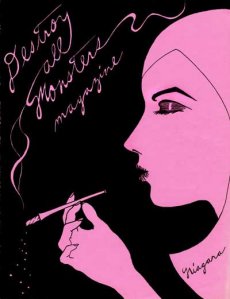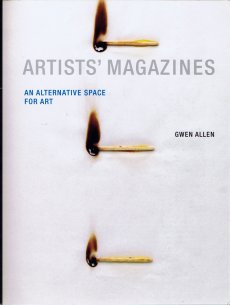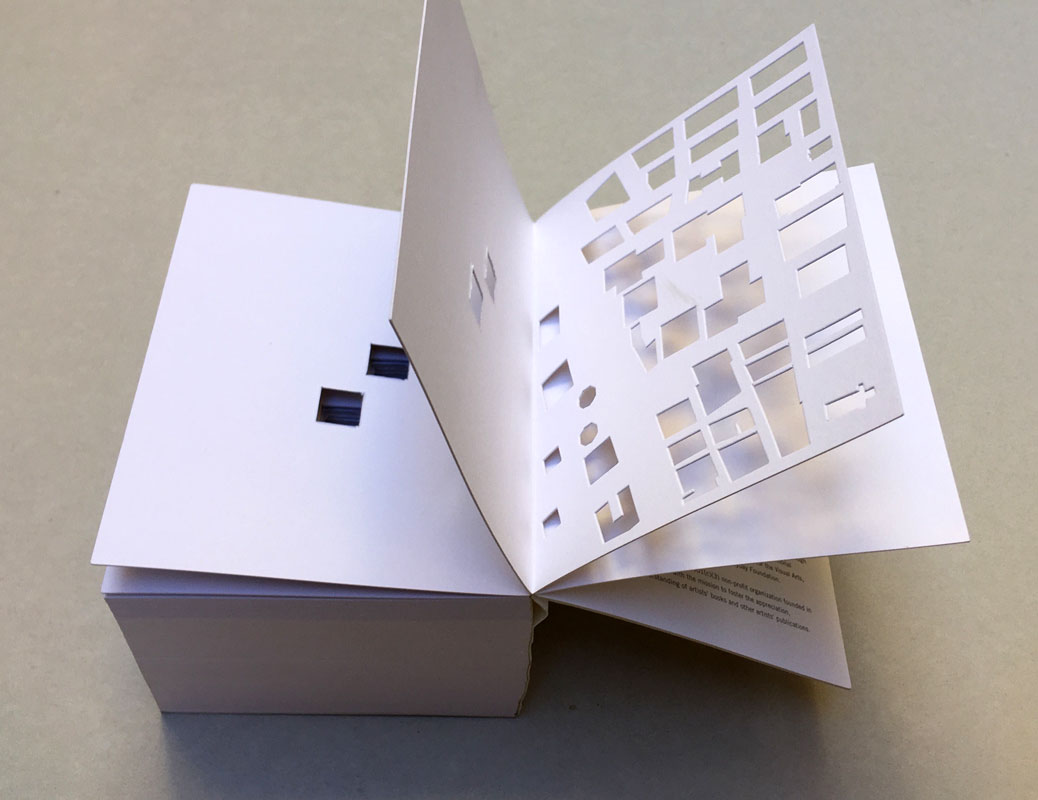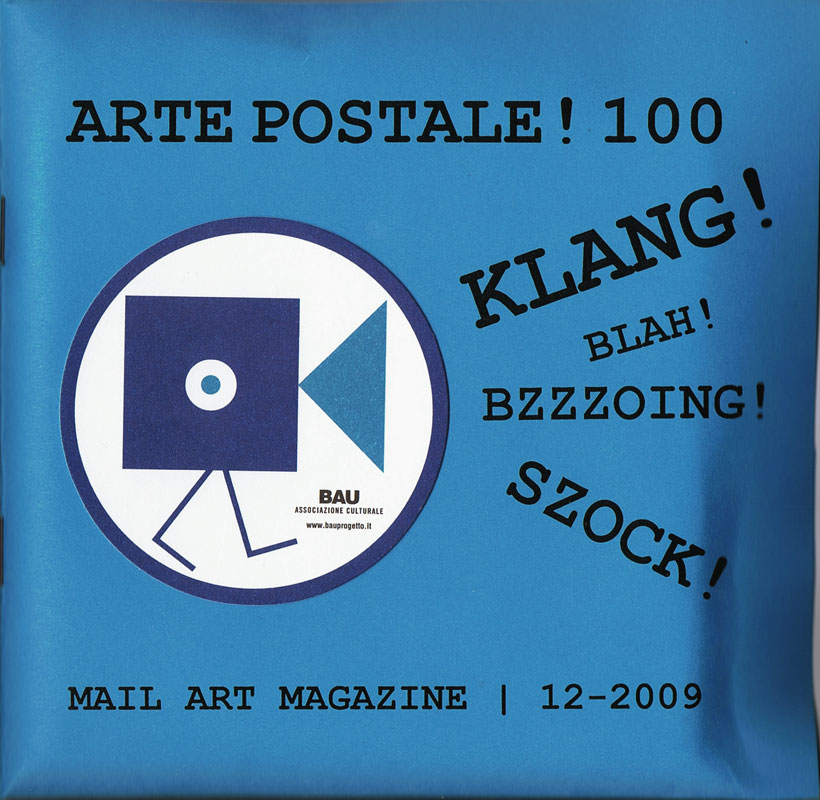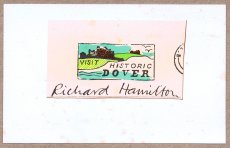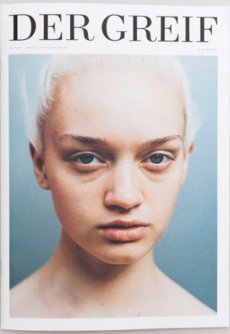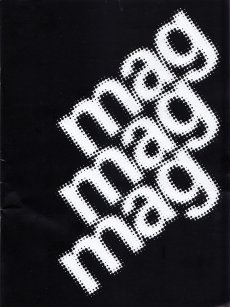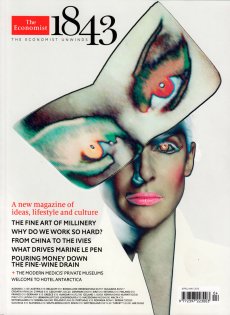|
Titel
-
Destroy All Monsters Magazine 1976-1979
Technische
Angaben
-
[270] S., 27x20,8 cm, Auflage: 3.000, ISBN/ISSN 9780978869786
verschiedene Papiere, erste Seite mit Schablone gesprüht
ZusatzInfos
-
Facsimile edition of Destroy All Monsters Magazine including remnants of the "lost" seventh issue, which was never released. Destroy All Monsters Magazine features work by Mike Kelley, Cary Loren, Niagara, and Jim Shaw.
Destroy All Monsters Magazine was edited by Cary Loren and contained artwork, photographs, and flyers from band mates Mike Kelley, Cary Loren, Niagara, and Jim Shaw. Printed using any papers and techniques available to the band, the issues combine the cut and paste tactics of punk zines with a psychedelic affinity for color. Destroy All Monsters Magazine functions as a kind of manifesto, providing insight into the band through densely layered pages with movie imagery, kitsch, cartoons, delicate drawings, and counter-culture collages. While Destroy All Monsters has been the subject of recent exhibitions and partial reprints, this is the first time that all issues have been reprinted.
Text von der Verlagswebseite
|
Titel
-
Artists' Magazines - An Alternative Space for Art
Technische
Angaben
-
368 S., 24,8x19 cm, ISBN/ISSN 9780262528412
Broschur
ZusatzInfos
-
Originalausgabe von 2011.
During the 1960s and 1970s, magazines became an important new site of artistic practice, functioning as an alternative exhibition space for the dematerialized practices of conceptual art. Artists created works expressly for these mass-produced, hand-editioned pages, using the ephemerality and the materiality of the magazine to challenge the conventions of both artistic medium and gallery. In Artists’ Magazines, Gwen Allen looks at the most important of these magazines in their heyday (the 1960s to the 1980s) and compiles a comprehensive, illustrated directory of hundreds of others.
Among the magazines Allen examines are Aspen (1965–1971), a multimedia magazine in a box—issues included Super-8 films, flexi-disc records, critical writings, artists’ postage stamps, and collectible chapbooks, Avalanche (1970-1976), which expressed the countercultural character of the emerging SoHo art community through its interviews and artist-designed contributions, and Real Life (1979-1994), published by Thomas Lawson and Susan Morgan as a forum for the Pictures generation. These and the other magazines Allen examines expressed their differences from mainstream media in both form and content: they cast their homemade, do-it-yourself quality against the slickness of an Artforum, and they created work that defied the formalist orthodoxy of the day. Artists’ Magazines, featuring abundant color illustrations of magazine covers and content, offers an essential guide to a little-explored medium.
In den 1960er und 1970er Jahren wurden Zeitschriften zu einem wichtigen neuen Ort der künstlerischen Praxis und fungierten als alternativer Ausstellungsraum für die entmaterialisierten Praktiken der Konzeptkunst. Künstler schufen Werke speziell für diese massenproduzierten, von Hand herausgegebenen Seiten und nutzten die Vergänglichkeit und Materialität der Zeitschriften, um die Konventionen sowohl des künstlerischen Mediums als auch der Galerie in Frage zu stellen. In Artists' Magazines befasst sich Gwen Allen mit den wichtigsten dieser Zeitschriften in ihrer Blütezeit (1960er bis 1980er Jahre) und stellt ein umfassendes, bebildertes Verzeichnis von Hunderten weiterer Zeitschriften zusammen.
Zu den von Allen untersuchten Magazinen gehören Aspen (1965-1971), ein multimediales Magazin in einer Box - die Ausgaben enthielten Super-8-Filme, Flexi-Disc-Schallplatten, kritische Schriften, Briefmarken von Künstlern und Sammelbücher, Avalanche (1970-1976), das durch seine Interviews und von Künstlern gestalteten Beiträge den gegenkulturellen Charakter der aufstrebenden Kunstszene von SoHo zum Ausdruck brachte, und Real Life (1979-1994), das von Thomas Lawson und Susan Morgan als Forum für die Generation Pictures herausgegeben wurde. Diese und die anderen von Allen untersuchten Magazine unterschieden sich in Form und Inhalt von den Mainstream-Medien: Sie stellten ihre hausgemachte Do-it-yourself-Qualität der Glätte eines Artforums gegenüber und schufen Arbeiten, die sich der formalistischen Orthodoxie der Zeit widersetzten. Artists' Magazines, mit zahlreichen Farbabbildungen von Titelseiten und Inhalten, bietet einen unverzichtbaren Leitfaden für ein wenig erforschtes Medium.
Übersetzt mit www.DeepL.com/Translator, Text von der Webseite
Erwähnt werden neben vorwiegend amerikanischen Magazinen auch europäische Magazine
|
 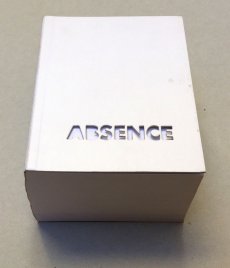
Technische
Angaben
-
240 ca. S., 12,5x10 cm, Auflage: 2.000, ISBN/ISSN 0894390139
Umschlag aus Karton mit Leinenstreifen, ca. 120 Seiten gestanzt
ZusatzInfos
-
2004 winner of I.D. Magazine's Design Distinction award, Absence is the third book to come out of Printed Matter’s Publishing Program for Emerging Artists, a program made possible through the generous support of New York City's Department of Cultural Affairs, The Andy Warhol Foundation for the Visual Arts, the Elizabeth Firestone Graham Foundation, and the Heyday Foundation. The generosity of Whitney trustees Melva Bucksbaum and Raymond J. Learsy was instrumental to the Museum’s participation in the publication of this exciting new work.
Both a book and a sculptural object, Absence is a memorial to the twin towers of the World Trade Center. Yoon, an architect and designer who is currently an Assistant Professor of Architecture at the Massachusetts Institute of Technology, chose not to produce a traditional design proposal for the World Trade Center Memorial Competition. Instead she created a non-architectural, non site-specific space of remembrance: a portable personal memorial in the form of book.
At almost two pounds, Absence has a considerable physical presence, but it is in every way the ghost of a presence, and it is this ghostliness that gives it its particular emotional weight. A solid white block of thick stock cardboard pages, the book’s only "text" consists of one pinhole and two identical squares die-cut into each of its one-hundred-and-twenty pages – one for each story of the towers including the antenna mast. These removed elements lead the reader floor by floor through the missing buildings towards the final page where the footprint of the entire site of the World Trade Center is die-cut into a delicate lattice of absent structures.
Of all of the proposed monuments and grand designs for the twin towers to emerge in the last two years, Absence is remarkable for its employment of an under-used strategy: restraint. The simplicity of Yoon’s materials and her use of repetition speak, without words, about unspeakable loss. Quiet, respectful, mournful, the book does not aim to represent the magnitude of the disaster. Instead it appeals to the vastness of the reader’s imagination and capacity to grieve. The human scale of her memorial operates on a personal level – it delivers the memory of lives lost into the reader’s hands. At the same time, as a scale model of a vanished architectural site, it operates on a larger cultural level by commemorating the site itself.
Text von der Webseite. Fotos Xenia Fumbarev
|
Titel
-
Arte Postale! 100 - Klang! Blah! Bzzzoing! Szock!
Technische
Angaben
-
36 S., 14,5x15 cm, Auflage: 100, keine weiteren Angaben vorhanden
Drahtheftung, im Umschlag vorne 3 Booklets und 1 gefaltetes Poster (Klang! Suoni Contemporeani) in Einschubtasche, rückseitig eine selbstgebrannte und -gestempelte Multimedia CD, Heftseiten Schwarz-Weiss Kopien mit 4 eingeklebten Farbbildern, auf dem Cover das Klang! Logo ebenfalls aufgeklebt
ZusatzInfos
-
ARTE POSTALE! (1979-2009)
One of the best known and probably the most long-live mail art magazine on the planet, Arte Postale! has assembled original works or published materials by hundreds of international networkers. The project is considered concluded with issue n.100 (december 2009).
Text von mailartprojects.blogspot.com
When, just over twenty, I was assembling the first issue of the magazine Arte Postale!, joining with brass rings a dozen of sheets printed in one hundred copies on pink paper, I would never have imagined that thirty years later I would have been still busy putting together with scissors and glue the very same publication. Instead, this issue n. 100, intentionally produced in the homemade cut-and-paste style typical of mail art, even shares the musical theme with that first experiment, in which I already rubberstamped and glued leaflats on the pages or I stapled on them a piece of magnetic tape.
Introduction by Vittore Baroni
Issue no. 100 of Vittore Baroni's Arte Postale! magazine dedicated to the Klang! exhibition/sonic arts festival held in Viareggio, Italy, august 7-9 2009.
36 pp. booklet with attached cd-r, published in 100 copies (standard edition, in the AAP) plus 100 copies with additional plastic pouch including 30 original cd-size works by 30 artists (Joel S. Cohen, David Dellafiora, Mike Dickau, Carol Stetser, Ruggero Maggi, Emilio Morandi, Jan-Willem Doornenbal, Ever Arts, Luc Fierens, Richard Kostelanetz, Jurgen O. Olbrich, Gianni Simone, Rod Summers, Bruno Cassaglia, Ruggero Maggi, Serse Luigetti, etc.
Among them comes a CD mini-album by Jarmo Sermilä: Mechanical Partnership, a complimentary copy of the official Jase 2000 release - see Jarmo Sermilä - Mechanical Partnership.
Text von discogs Webseite
Audio
1. Mike Dickau - Arte Postale!: Pax Vobiscum (2’54”)
2. Günther Ruch - Musica 123456 (2’09”)
3. Reid Wood - Future Sound (0’27”)
4. Krell - Bzzzoing! (5’00”)
5. Franco Piri Focardi - Concerto Per Bozuffo (3’41”)
6. Jan Willem Doornenbal - Lake Crocodile (2’16”)
7. Bruno De Angelis - 100: Game Over! (4’ 30”)
8. Joel Cohen - Last Song Reverse (2’17”)
Tempo Totale | Total Time: 23’54”
|

Technische
Angaben
-
192 S., 20x15 cm, ISBN/ISSN 9781564660923
softcover
ZusatzInfos
-
Charley is a contemporary art publication series edited by Maurizio Cattelan, Massimiliano Gioni and Ali Subotnick. A do-it-yourself magazine, Charley is an inclusive publication relying on assimilation, rather than on selection : Charley is a machine for redistribution, a mechanism for spreading and exploiting information, rumors, and communication. Like most information, it is partial, unstable, and untrustworthy. There are no hierarchies and no favorites in Charley : it flirts equally with celebrity and failure. Charley is a multiform creature, bound to transform with each issue. Charley is a pre-digested combine, with pages assembled from catalogues, brochures, press clips, postcards, and other visuals. But what is Charley really? Charley is a new publication on emerging artists. Prominent curators, writers, artists, and other arts professionals from around the world were asked to suggest up to 10 up-and-coming artists and/or submit materials on the artists for inclusion in Charley. 400 art makers from around the globe responded, and each of them is represented by one page of Charley
|
Titel
-
Postmark - Visit Historic Dover
Technische
Angaben
-
2 S., 8,9x14,2 cm, keine weiteren Angaben vorhanden
Postkarte, Vorderseite bedruckt mit Briefmarke
|
Titel
-
Aspen - The Magazine in a Box Vol. 1 No. 04
Technische
Angaben
-
31x23,6x1,5 cm, keine weiteren Angaben vorhanden
Kassette mit zwei gefalteten Einzelblättern, beidseitig bedruckt, eins davon Werbemappe mit Werbeheftchen für Gordon's und Newsletter der Something Else Press, drei Poster, drei Hefte mit Drahtheftung und eine Schallplatte.
ZusatzInfos
-
Ausgabe gestaltet von Quentin Fiore. Ausgabe besteht aus 9 Teilen: 1. Box, 2. "The Medium Is the Massage" Poster-sized mosaic of pages from The Medium Is the Massage by McLuhan and Quentin Fiore, 3. "The TV Generation" Poster of a color photo taken at the Tribal Stomp at San Francisco's Avalon Ballroom, 4. "Diary: How to Improve the World (You Will Only Make Matters Worse)" Random observations by John Cage, 5. "The Electronics of Music" Essay on electronic music by Faubion Bowers and Daniel Kunin, 6. Phonograph recording. A Recorded Sampler of Electronic Music. Side A: In Memoriam of Edgar Varèse, by Mario Davidovsky. Side B: Horn, by Gordon Mumma, 7. "The Braille Trail" Bob Lewis and Alfred Etter describe a nature trail for the blind, 8. "Psycles" Excerpts from The Bikeriders, Danny Lyon' book about the Chicago Outlaws motorcycle club. Prefaced by a meditation on motorcycling by Bob Chamberlain, 9. Mappe mit Werbung mit einem Werbeheft für Gordon's und Newsletter der Something Else Press (Something Else Newsletter Volume 1, Number 6: May, 1967), weitere Werbehefte der Originalausgabe fehlen.
|
Titel
-
CARE 3 Selfportrait, doing your favourite work
Technische
Angaben
-
70 ca. S., 30,4x22 cm, Auflage: 100, numeriert, signiert, keine weiteren Angaben vorhanden
über 60 Originalbeiträge in fester Versandtasche mehrfarbig bedruckt (Siebdruck), Stempeldrucke, verschiedene Papiere und Techniken, Collagen, Zeichnungen, Materialien, mehrfach gefaltetes Plakat mit allen Teilnehmern
ZusatzInfos
-
Studentenprojekt. Ausschreibung von internationalen Mail Art Projekten
|
Titel
-
B.L.A.D. NO. 05 - ENTER IAN STEVENSON
Technische
Angaben
-
[52] S., 13,5x9,5 cm, Auflage: 300, ISBN/ISSN 09620074
Drahtheftung, Rückseite mit Silberprägung, in transparenter Kunststoffhülle mit beigelegtem Blatt, Aufkleber
ZusatzInfos
-
In our fifth issue of BLAD we asked Ian Stevenson if he would make enough drawings for us to fill a whole magazine. And we can proudly say that he did! The issue is called Enter Ian Stevenson, and it's a very fine and funny tour through Ian's characteristic and very humorous world of drawings. As he says himself "48 pages of drawings, each one created only for you".
Text von der Webseite
|
Titel
-
Der Greif Ausgabe 07 2013
Technische
Angaben
-
98 S., 33,5x24 cm, Auflage: 2.500, numeriert, 2 Stück. ISBN/ISSN 21914524
Drahtheftung
ZusatzInfos
-
100 pages, 133 photos, 22 texts from 136 artists coming from more than 50 countries. Again, we’re happy to present to you a sensitively layouted magazine containing carefully curated image and text.
Text von der Webseite.
|
Technische
Angaben
-
76 S., 23,6x16,5 cm, Auflage: 1.000, keine weiteren Angaben vorhanden
Drahtheftung, Offsetdruck
ZusatzInfos
-
Attention! This is not a drill! Please be advised that the following pages you are about to read may give you the impression that you actually have no idea what space is and never have. Later on, this may turn out to be true. It should also be noted that exploration of the subject requires controlled conditions and safety measures even when conducted by professionals. Contemplations about the definitions of space are highly dangerous procedures and should not be attempted at home. All liability for collateral damage from any cognitive activities undertaken by laymen as a result of the ideas contained herein is hereby excluded. Thank you for your understanding.
Text von der Webseite
|
Technische
Angaben
-
48 S., 28x21 cm, keine weiteren Angaben vorhanden
Drahtheftung
ZusatzInfos
-
Katalogheft zum 620 Reading Room with magCulture and Postcard Teas at Vitsoe London. Beteiligte Magazine: Alpine Review, Another Escape, Delayed Gratification, FAT, Flaneur, The Gentlewoman, The Gourmand, The Green Soccer Journal, HOLO, Intern, Inventory, mono.kultur, Motherland, Offscreen, The Outpost, The Pitchfork Review, Printed Pages, Riposte, Shelf Journal, Vestoj
|
Titel
-
The Economist 1943 Issue 01
Technische
Angaben
-
130 S., 27,5x20,2 cm, ISBN/ISSN 23972238
Broschur
ZusatzInfos
-
The launch issue hits newsstands on March 9 with an April/May cover, and will have 120 pages. The redesigned site will go live, without a paywall, on March 7, the same day that the social accounts and the app will revert from Intelligent Life to 1843. 1843 will, like Intelligent Life before it, publish six issues a year.
Newly appointed editor Emma Duncan has come on board from The Economist where she was deputy editor. At 1843, she leads a team of 25 across editorial and commercial, and also can pull on the wider global Economist team.
Text von der Webseite
A new magazine of ideas, lifestyle and culture
|

